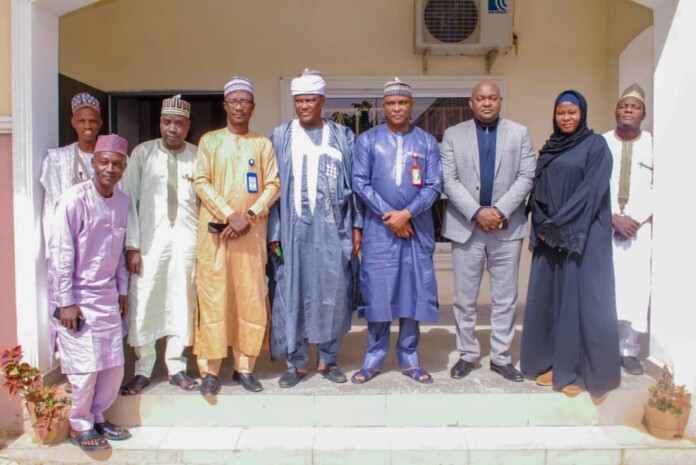By Faith Awa Maji, Katsina
The Katsina State coalitions is Civil Society Organizations, CSOs’ Safe Schools Technical Working Group (KCSSTWG), Zandam Area Development Association Wegirls Development Foundation, Civil Society Action Coalition on Education (CSACEFA) supported by the Development Research and Project Centre (DRPC) have identified factors responsible for a smooth conduct of safe schools in Katsina State.
In a recent research, CSOs’ Safe Schools Technical Working Group (KCSSTWG), delved into the challenges faced by Nigerian schools, such as threats from insurgency and communal conflicts and examined how to mitigate the risks.
In its report, the group canvassed a collaborative approach involving governments at all levels, international organisations and local communities in fostering a safer learning environment.
Ultimately, the Safe School Declaration in Nigeria represents a crucial step towards safeguarding the educational infrastructure and promoting conducive atmosphere for learning and development.
In recent years, according to the report, educational institutions in Katsina, Nigeria, have faced significant challenges arising from security threats including insurgency and communal conflicts.
Recognising the urgency of addressing the concerns and safeguarding the educational environment, the Safe School Declaration has emerged as a critical initiative.
The organization noted that schools in Katsina State are affected by various security challenges, contributing to a complex environment that impacts the safety and well-being of students, teachers, and educational infrastructure.
The report identified certain key factors affecting schools in Katsina State to include insurgent activities, kidnappings for ransom, infiltration of armed groups, inadequate surveillance, geographical challenges, impact of conflicts, vulnerability of students, resource constraints, crisis management and government response.
According to the CSOs’ Safe Schools Technical Working Group (KCSSTWG), “the region has experienced activities from insurgent groups, leading to direct threats to schools and educational facilities. “On “Kidnappings for ransom, schools have been targeted for kidnappings with criminal groups seeking ransom payments in exchange for the release of students and staff.
“Infiltration of Armed Groups: – The infiltration of armed groups in certain areas poses a direct threat to the safety of schools and their occupants.
“Limited security measures: many schools face challenges in implementing adequate security measures, including the lack of perimeter fencing, security personnel and emergency response plans.
“Inadequate surveillance: Limited surveillance infrastructure contributes to difficulties in monitoring and securing school premises effectively.
“Geographical challenges: The vast and sometimes remote geography of Katsina presents challenges in deploying security forces promptly to address threats to schools.
“Impact of conflicts: The spill-over effects of conflicts in neighbouring regions contribute to an unstable security environment, affecting schools in Katsina.
“Community Involvement: Community support and involvement in ensuring the security of schools vary, impacting on the success of local initiatives to protect educational institutions.
“Vulnerability of students: Students are particularly vulnerable to security threats and the fear of attacks may affect attendance, mental health, and overall educational outcomes.
“Resource Constraints: Limited resources, both financial and logistical, hinder the ability of schools to invest in comprehensive security measures and infrastructure upgrades.
“Government response: The effectiveness of government responses, including law enforcement and policy measures, vary and play a significant role in addressing security challenges faced by schools.
“Understanding and addressing these multifaceted security challenges is crucial for creating a safe and secure environment for education in Katsina.
“It requires a comprehensive and collaborative approach involving local communities, government agencies and other stakeholders to mitigate the impact on schools and ensure the well-being of students and educators.”
The CSOs’ Safe Schools Technical Working Group (KCSSTWG), while on advocacy visits to State’s actors such as security operatives, government officials, religious and traditional leaders said the way forward for Safe School Declaration in Katisna State was to enhance security infrastructure, community engagement and awareness, collaboration with local authorities, capacity building for educators,
Government commitment and funding, early warning systems, public and private partnerships and crisis communication plans.
Some other recommendations are counseling and mental health support arguing that establishment of counseling and mental health support services for students and educators who may be affected by security incidents, addressing the psychological impact of such events.
It also further states that to collaborate with international organizations and neighbouring regions to share best practices, receive support in capacity building, and address cross-border security concerns adding that the implementing the measures collectively will contribute to a more resilient and secure educational environment in Katsina, fostering a conducive atmosphere for learning and the overall well-being of students and educators.







